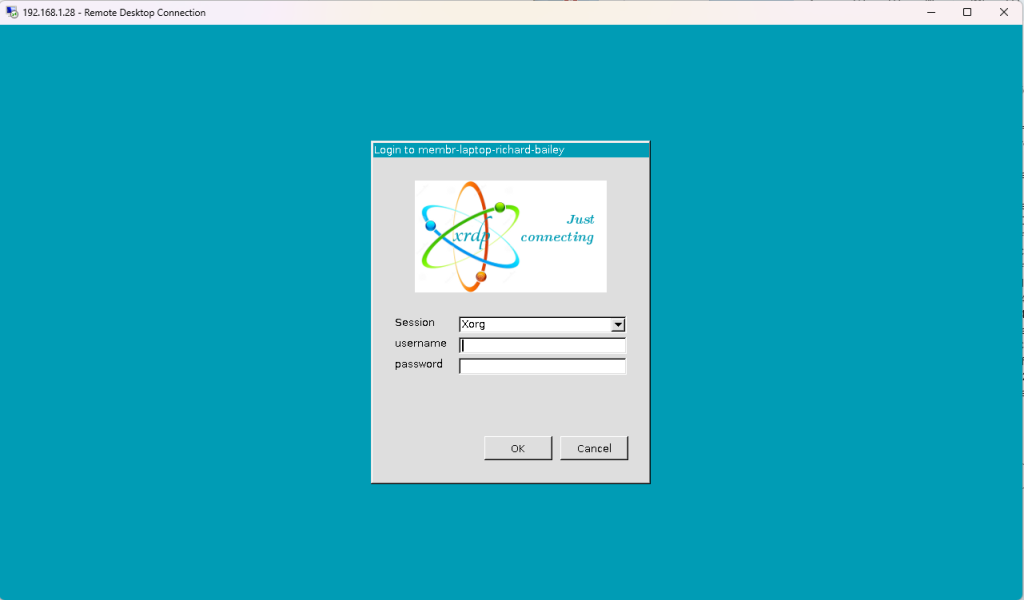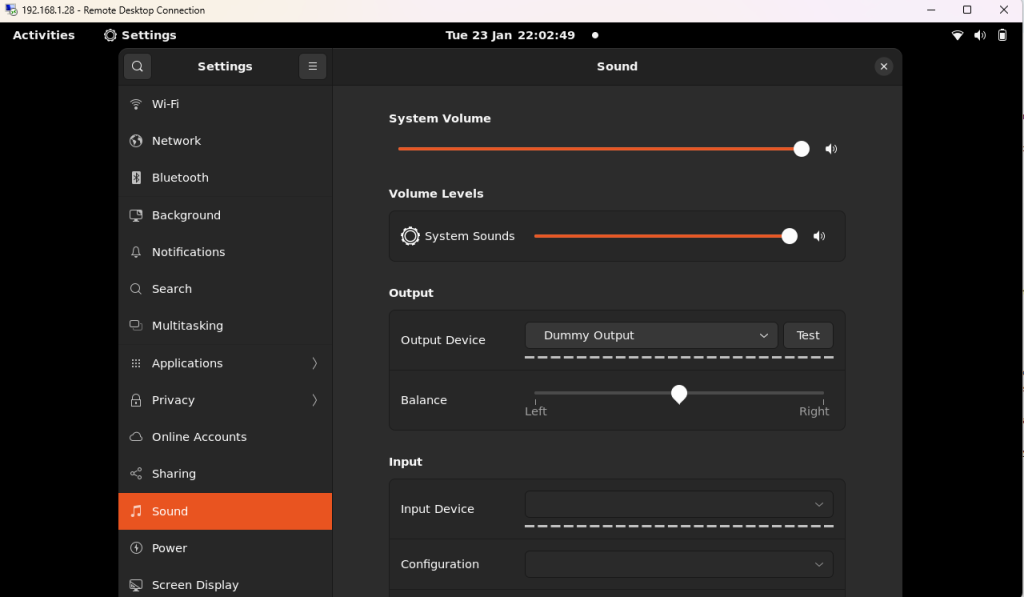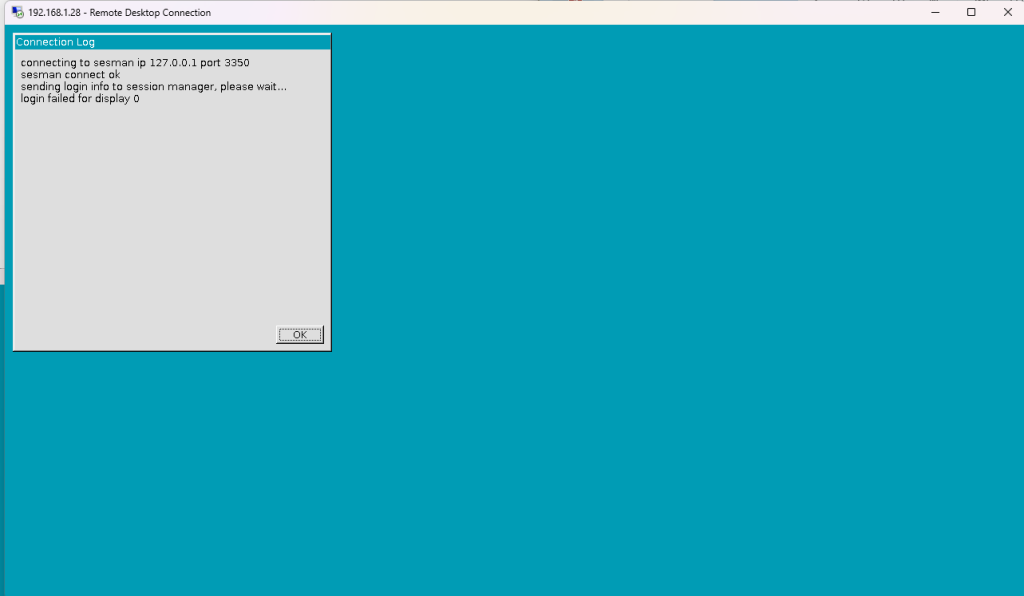How To Install Xrdp Server On Ubuntu 22.04
One of the first blogs I wrote for turbogeek.co.uk was about installing XRDP on Ubuntu 14.04. Fast-forward over six years, and a lot has changed in the world of XRDP. Not to mention, we are now nine Ubuntu revisions ahead. This demonstrates the rate of change in the IT industry.
So, today’s questions are:
- Is XRDP still used in 2024?
- Can you Install XRDP on Ubuntu 22.04?
A Reminder of What is Xrdp?
Xrdp is an open-source remote desktop protocol for Linux that allows users to access their graphical desktops remotely. It’s cross-platform, compatible with RDP clients, supports various Linux desktop environments, and ensures secure encrypted communication. As a community-driven solution, it provides a user-friendly experience for managing Linux systems from different platforms.
Is Xrdp Still Relevent in 2024?
XRDP is frequently maintained and updated. Check out their website here.
All I need now is a desktop version of Ubuntu 22.04. I just so happen to be writing this on a Ubuntu 22.04 laptop. Ta-da!
echo $XDG_CURRENT_DESKTOP
ubuntu:GNOME
cat /etc/lsb-release
DISTRIB_ID=Ubuntu
DISTRIB_RELEASE=22.04
DISTRIB_CODENAME=jammy
DISTRIB_DESCRIPTION="Ubuntu 22.04.3 LTSGuide to Installing Xrdp on Ubuntu 22.04
Here is an easy-to-follow guide for installing xRDP on Ubuntu. Remember to check out how to enable multi-user mode if you are connecting to a shared server.
Step 1 – Update Ubuntu
- Update Ubuntu Repository; you can optionally upgrade the OS if needed.
sudo apt-get update -y
sudo apt-get upgrade #optionalStep 2 – Install XRDP
- Use apt to install the xRDP packages
sudo apt install xrdp -y- You should see this output:
sudo apt install xrdp
[sudo] password for rbailey:
Reading package lists... Done
Building dependency tree... Done
Reading state information... Done
The following packages were automatically installed and are no longer required:
libhawtjni-runtime-java libjansi-java libjansi-native-java libjline2-java
python3-cliapp python3-markdown python3-pygments python3-ttystatus
scala-library scala-parser-combinators scala-xml
Use 'sudo apt autoremove' to remove them.
The following additional packages will be installed:
xorgxrdp
Suggested packages:
guacamole
The following NEW packages will be installed
xorgxrdp xrdp
0 to upgrade, 2 to newly install, 0 to remove and 15 not to upgrade.
Need to get 582 kB of archives.
After this operation, 3,380 kB of additional disk space will be used.
Do you want to continue? [Y/n] y
Get:1 http://gb.archive.ubuntu.com/ubuntu jammy/universe amd64 xrdp amd64 0.9.17-2ubuntu2 [517 kB]
Get:2 http://gb.archive.ubuntu.com/ubuntu jammy/universe amd64 xorgxrdp amd64 1:0.2.17-1build1 [65.3 kB]
Fetched 582 kB in 0s (2,756 kB/s)
Selecting previously unselected package xrdp.
(Reading database ... 243766 files and directories currently installed.)
Preparing to unpack .../xrdp_0.9.17-2ubuntu2_amd64.deb ...
Unpacking xrdp (0.9.17-2ubuntu2) ...
Selecting previously unselected package xorgxrdp.
Preparing to unpack .../xorgxrdp_1%3a0.2.17-1build1_amd64.deb ...
Unpacking xorgxrdp (1:0.2.17-1build1) ...
Setting up xrdp (0.9.17-2ubuntu2) ...
Generating 2048 bit rsa key...
ssl_gen_key_xrdp1 ok
saving to /etc/xrdp/rsakeys.ini
Created symlink /etc/systemd/system/multi-user.target.wants/xrdp-sesman.service
→ /lib/systemd/system/xrdp-sesman.service.
Created symlink /etc/systemd/system/multi-user.target.wants/xrdp.service → /lib/
systemd/system/xrdp.service.
Setting up xorgxrdp (1:0.2.17-1build1) ...
Processing triggers for man-db (2.10.2-1) ...#####..........................]
Processing triggers for libc-bin (2.35-0ubuntu3.6) ...- You can check that XRDP is running by typing:
sudo systemctl status xrdp- You should see output like this:
sudo systemctl status xrdp
● xrdp.service - xrdp daemon
Loaded: loaded (/lib/systemd/system/xrdp.service; enabled; vendor preset: enabled)
Active: active (running) since Tue 2024-01-23 21:32:50 GMT; 1min 19s ago
Docs: man:xrdp(8)
man:xrdp.ini(5)
Process: 9815 ExecStartPre=/bin/sh /usr/share/xrdp/socksetup (code=exited, status=0/SUCCESS)
Process: 9823 ExecStart=/usr/sbin/xrdp $XRDP_OPTIONS (code=exited, status=0/SUCCESS)
Main PID: 9824 (xrdp)
Tasks: 1 (limit: 37961)
Memory: 956.0K
CPU: 26ms
CGroup: /system.slice/xrdp.service
└─9824 /usr/sbin/xrdp
Jan 23 21:32:49 ichard-bailey systemd[1]: Starting xrdp daemon...
Jan 23 21:32:49 richard-bailey xrdp[9823]: [INFO ] address [0.0.0.0] port [3389] mode 1
Jan 23 21:32:49 richard-bailey xrdp[9823]: [INFO ] listening to port 3389 on 0.0.0.0
Jan 23 21:32:49 richard-bailey xrdp[9823]: [INFO ] xrdp_listen_pp done
Jan 23 21:32:49 richard-bailey systemd[1]: xrdp.service: Can't open PID file /run/xrdp/>
Jan 23 21:32:50 systemd[1]: Started xrdp daemon.
Jan 23 21:32:51 richard-bailey xrdp[9824]: [INFO ] starting xrdp with pid 9824
Jan 23 21:32:51 richard-bailey xrdp[9824]: [INFO ] address [0.0.0.0] port [3389] mode 1
Jan 23 21:32:51 rchard-bailey xrdp[9824]: [INFO ] listening to port 3389 on 0.0.0.0
Jan 23 21:32:51 richard-bailey xrdp[9824]: [INFO ] xrdp_listen_pp done
Step 3 – Configure SSL
This is a new feature from when I last tested this six years ago—more evidence of how times have changed quickly.
sudo adduser xrdp ssl-cert- Now restart the XRDP service.
sudo systemctl restart xrdp- Now Add a Firewall Rule to allow inbound and outbound traffic on port 3389
sudo ufw allow from 192.168.0.0/24 to any port 3389
sudo ufw allow 3389Note: My Windows PC, which I will use to test this, is on my local network, 192. x.x.x. If you are following along, you must change this value to what’s relevant.
Step 4 – Test the XRDP connection
I have now switched over to my Windows PC.
- The first step is to open Remote Desktop Connection (MSTSC)

For Windows:
- Search for “Remote Desktop Connection”: You can do this by typing “Remote Desktop Connection” in the Windows search bar.
- Open the Remote Desktop Connection application: Click on the application in the search results.
- Enter the Computer’s IP Address or Hostname: In the Remote Desktop Connection window, you’ll need to enter the IP address or hostname of the computer you want to connect to.
- Click “Connect”: Once you’ve entered the required information, click the “Connect” button.
- Enter Credentials: You’ll be prompted to enter the username and password for the computer you are connecting to. Ensure you have the correct credentials.
- Connect: After entering the credentials, click “OK” or “Connect” to establish the RDP connection.
For Mac:

- Download Microsoft Remote Desktop from the App Store: If you don’t have it already, you can download the Microsoft Remote Desktop application from the Mac App Store.
- Open Microsoft Remote Desktop: Once installed, open the application.
- Click on “New”: To create a new connection, click on the “+” icon or select “New” from the File menu.
- Enter Connection Details: Enter the PC name or IP address, and configure other settings as needed.
- Save the Connection: Click “Add” to save the connection.
- Connect: Select the newly created connection and click “Start” to initiate the RDP session.
Step 5 – Initiate an RDP connection
- Use the remote desktop connection tool to connect to your Ubuntu server.
- You can use the RDP or the FQDN if a home network is enabled.

- When you get this warning, click YES.

- After a few seconds, you should connect to the Ubuntu machine.
- This is the login prompt you will get:

- Enter your Username and Password for the Ubuntu Machine

IMPORTANT: If you get this message (see below), you have mistyped your details or logged in to an active session (someone else is logged on) – Sometimes, you may get a BLACK screen. To fix you need to enable multi-user mode, again, see below:

Step 6 – Enable Multi-User Mode
- Install D-BUS
dbus-x11 is a software package that provides a D-Bus session bus for each X11 display, facilitating inter-process communication between applications running under the X11 window system.
sudo apt-get install dbus-x11- Modify the startwm.sh file
sudo nano /etc/xrdp/startwm.shAdd the following:
# Unset variables that conflict with the GNOME session
unset DBUS_SESSION_BUS_ADDRESS
unset XDG_RUNTIME_DIRFind the last two lines of the file, which should look like this
test -x /etc/X11/Xsession && exec /etc/X11/Xsession
exec /bin/sh /etc/X11/XsessionBefore:
#!/bin/sh
# xrdp X session start script (c) 2015, 2017, 2021 mirabilos
# published under The MirOS Licence
# Rely on /etc/pam.d/xrdp-sesman using pam_env to load both
# /etc/environment and /etc/default/locale to initialise the
# locale and the user environment properly.
if test -r /etc/profile; then
. /etc/profile
fi
exec /bin/sh /etc/X11/XsessionAfter:
# Comment out the original Xsession lines
# test -x /etc/X11/Xsession && exec /etc/X11/Xsession
# exec /bin/sh /etc/X11/Xsession
# Unset variables that conflict with the GNOME session
unset DBUS_SESSION_BUS_ADDRESS
unset XDG_RUNTIME_DIR
# Start GNOME
exec /usr/bin/gnome-session
Save the file and exit the editor.
Restart the xrdp service to apply the changes: sudo systemctl restart xrdp
That is it; reconnect to your Ubuntu Server, and you will get a new desktop even if the server (or laptop) is already in use.
We welcome all feedback. Please comment below.
Thanks for taking the time to read this article. if you have any questions or feedback, please write in the comment section below.




Thank you for the thorough guide. I can successfully connect from Windows to Ubuntu 22.04. However, I cannot connect from Mac. I am using Microsoft Remote Desktop client as you suggested. When i click on “connect” the application asks me for my user name and password and i cannot leave them blank (like in Windows is possible), I insert the credentials and it hangs trying to connecting saying: “Configuring remote pc”.
Do you have any experience that you can share?
Check the protocol that the mac is using, i believe macs can only use VNC connections, Unfortunately I don’t have a mac to test it on – but give it a try. Get back to me if you need further help.
Also try an alternative RDP client such as https://www.freerdp.com/ (Free), https://cord.sourceforge.net/ (Free) or https://www.royalapps.com/ts/mac/download (TRIAL)
RDP works great. Thank you.
However, multi-user mode does not work.
I can still only have one session.
I installed Ubuntu 22.04.3 LTS, configured and did everything as you suggested.
Is there anything else I should do or check?
I found the solution at https://c-nergy.be/blog/?p=16698
Workaround 3 works
Hi,
If you are using Windows and want to RDP Ubuntu VM using Hyper V virtualization then please see my detailed answer on https://askubuntu.com/a/1503875/1751721
The steps are staright forward and no new installation is required.
Best Regards,
Syed Nasir Abbas
I’m currently observing behavior where the connection is successful according to the logs but is dropped by the Windows RDP client as soon as the credentials are submitted. Any suggestions?
The first thing i would try is to eliminate the chance this is being caused by the Windows Firewall.
Disable the Windows firewall on the target machine. Try again. There is a good chance that this will fix it, if it does enable the firewall and manually add an outbound rule for 3389.
If it doesnt work. Try the basics, updates windows, reboot windows, reboot router.
If it still fails, copy the logs here and I will take another look for you.
Thanks for reading.
Richard aka TurboGeek
Great step-by-step guide! I followed your instructions and successfully installed XRDP on my Ubuntu 22.04 server. Thanks for making it so clear and easy to understand!